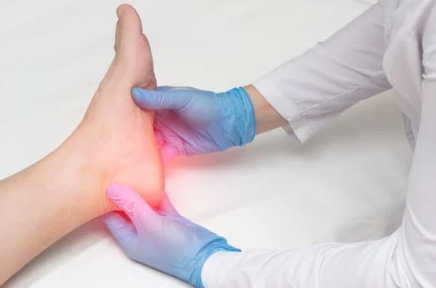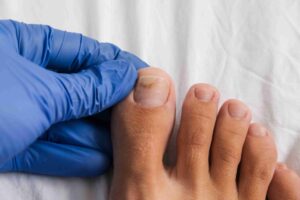Heels hurting? Let’s take a look
Heel pain can range from bearable to extremely disabling upon every step we take. Heel pain is not normal and you should not have to live with it. If you’re living with heel pain, you may be wondering how and where it started and it may be a symptom of a greater issue that you might not even be aware you had.
Heel pain is extremely common and can have several potential causes. It is often associated with discomfort or pain in the bottom of the foot, near the heel area.
Heel pain can be one of the most debilitating conditions as the heel bone is the largest in bone in the foot itself supporting the whole body’s weight and absorbing shock from each step. Sometimes, having heel pain can affect your daily routine activities and can limits the ability to go about your daily life.
Here are some of the common causes of heel pain
- Plantar Fasciopathy: This is one of the most frequent causes of heel pain. Plantar fasciitis is the inflammation of the plantar fascia, a thick band of tissue that runs along the bottom of your foot, connecting your heel bone to your toes. It typically causes stabbing pain in the heel, especially in the morning or after long periods of rest.
- Achilles Tendinopathy: The Achilles tendon connects the calf muscles to the heel bone. Overuse or strain on this tendon can lead to inflammation and pain, especially at the back of the heel.
- Heel Fat Pad Syndrome: This is a condition that involves the degeneration or thinning of the fat pad located beneath the heel bone (calcaneus). When this fat pad deteriorates, it can lead to discomfort and pain in the heel area.
- Tibialis Posterior Syndrome: This is a condition that affects the tibialis posterior tendon, which runs along the inside of the ankle and helps support the arch of the foot. When this tendon becomes inflamed or damaged, it can lead to a range of symptoms, including pain, instability, and a collapsing of the arch of the foot.
Other Causes
- Bursitis: The bursa is a small fluid-filled sac that acts as a cushion between bones and tendons. When it becomes inflamed, usually due to excessive pressure or repetitive stress, it can lead to heel pain.
- Tarsal Tunnel Syndrome: Similar to carpal tunnel syndrome in the wrist, tarsal tunnel syndrome involves compression of the tibial nerve as it passes through a tunnel in the ankle, leading to heel and foot pain.
- Arthritis: Certain forms of arthritis, such as rheumatoid arthritis or osteoarthritis, can cause heel pain along with other joint symptoms.
- Stress Fractures: Overuse or repetitive impact on the heel bone can result in tiny cracks or fractures, causing pain in the affected area.
Treatment
Treatment for heels hurting depends on the underlying cause. Here are some general measures that may help alleviate the discomfort:
- Rest: Avoid activities that exacerbate the pain and give your feet time to heal.
- Ice: Applying ice to the affected area can help reduce inflammation and pain.
- Supportive footwear: Wear shoes with good arch support and cushioning to reduce pressure on the heel.
- Stretching exercises: Gentle stretching exercises for the calf muscles and plantar fascia can be beneficial.
- Orthotic devices: Custom or over-the-counter shoe inserts can provide additional support and cushioning.
If your heel pain persists or worsens despite these measures, it’s essential to consult a healthcare professional such as a podiatrist for a proper diagnosis and tailored treatment plan.
Sever’s Disease
An overuse injury that causes pain in the heel bone (calcaneus) to growing children and adolescents is known as Sever’s Disease. This occurs during periods of rapid growth when the bones, muscles and tendons are developing at different rates.
The primary cause of Sever’s disease is repetitive stress and overuse of the heel’s growth plate. Activities that involve running, jumping and quick direction changes, such as sports like football, netball and gymnastics can contribute to this condition.
As there are many different causes of pain, treatment varies depending on what is causing the pain in the heel. Making some life adjustments can go a long way in relieving your heel pain and can also be complemented by treatments such good footwear and podiatry treatment intervention.
Heels hurting? Or suffering from any of these conditions? At The Chelsea Clinic, we can help. One of our podiatrist can assist and then recommend what treatments are best to get you back on track.  Podiatrist South Kensington
Podiatrist South Kensington
Schedule an appointment here or you may call us at +44 (0) 207 101 4000. 
We hope you have a feetastic day! 

-The Chelsea Clinic and Team


 Podiatrist South Kensington
Podiatrist South Kensington




